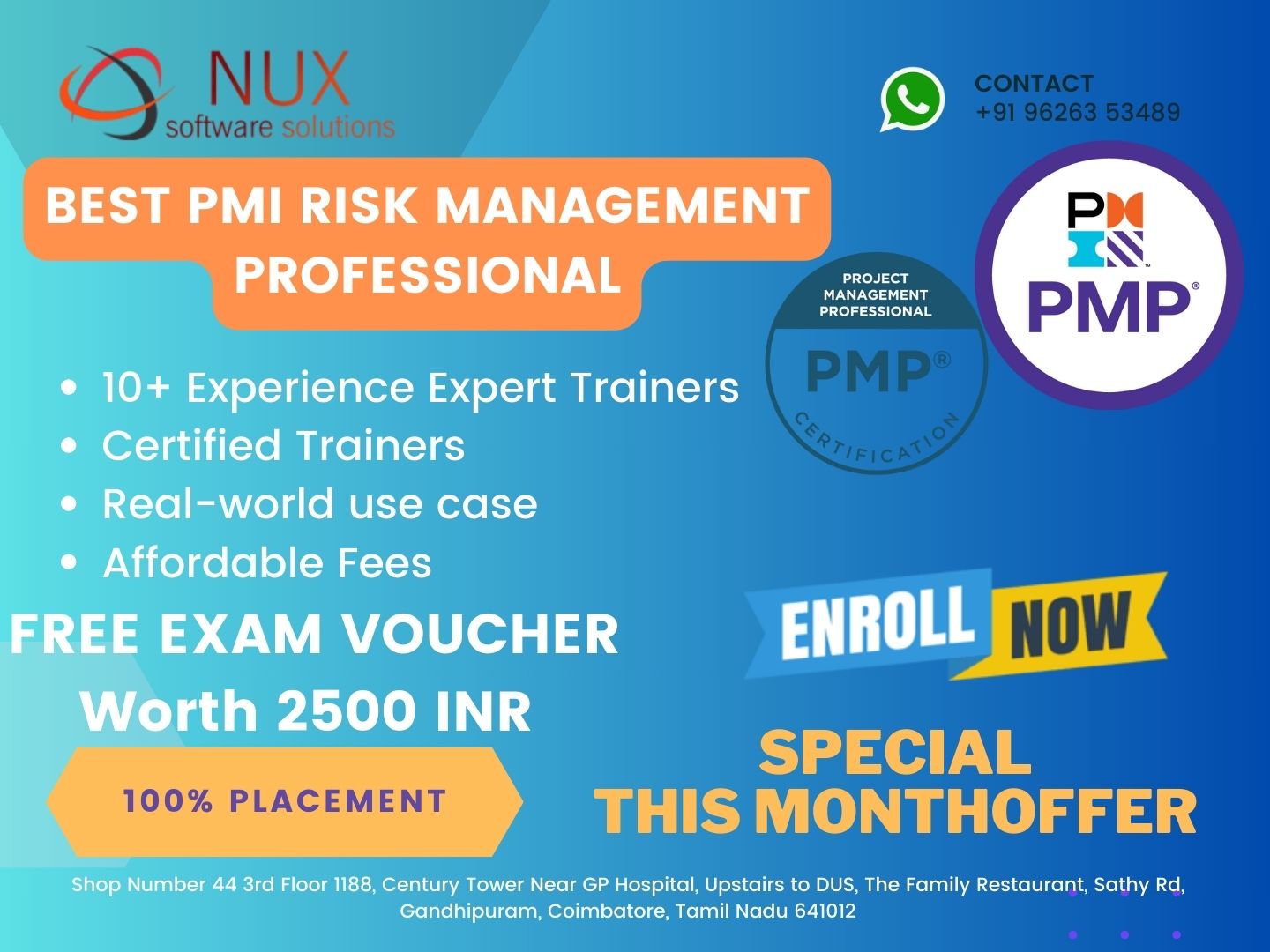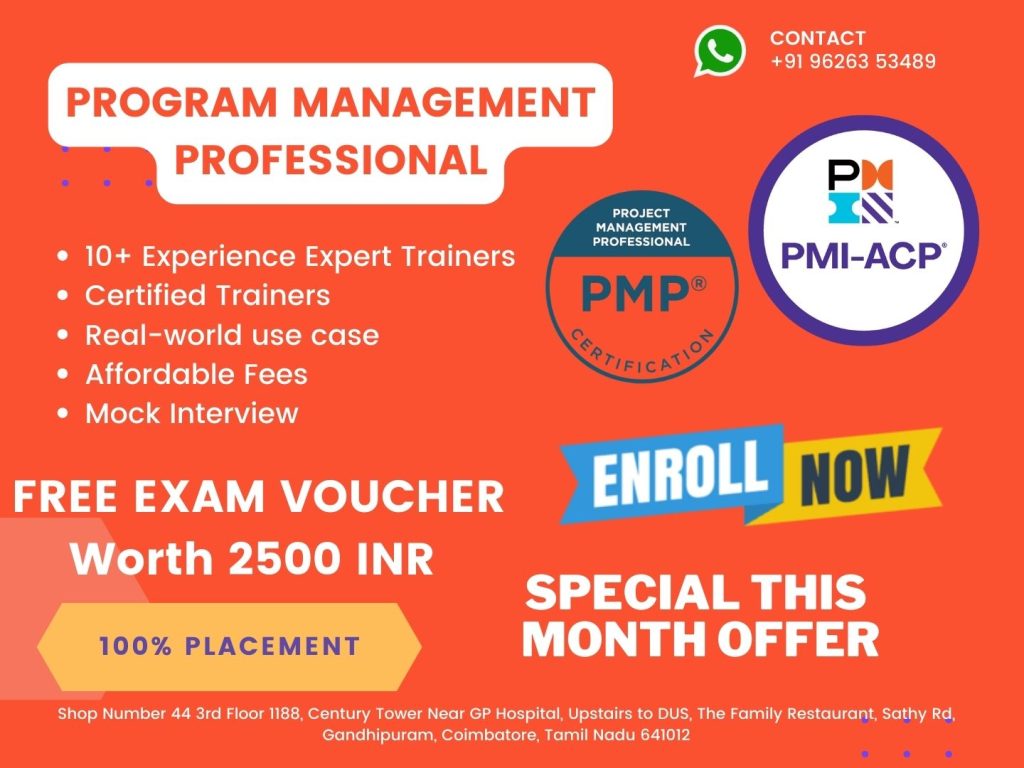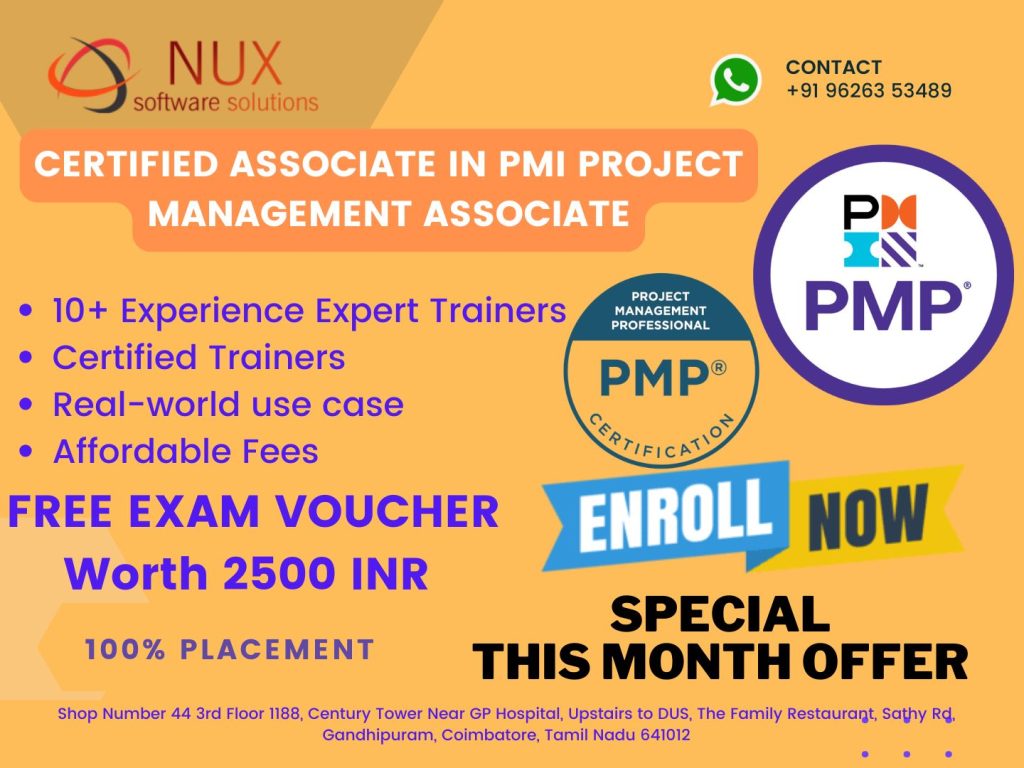PMI Risk Management Professional Training and certification

Course Summary
The PMI Risk Management Professional (PMI-RMP®) credential recognizes demonstrated knowledge and skill in assessing and identifying project risks, mitigating threats, and capitalizing on opportunities. This comprehensive training program equips professionals with the tools, strategies, and frameworks to lead risk management activities across projects and programs.
Aligned with the latest PMI standards and The Standard for Risk Management in Portfolios, Programs, and Projects, this course prepares participants to successfully complete the PMI-RMP® certification exam and apply risk management principles across diverse industries.
Why Choose This Course
Project risk is one of the most critical areas for project success—and one of the most misunderstood. This course helps you:
Gain specialized recognition in project and enterprise risk management
Learn techniques to anticipate, analyze, and respond to project risks before they escalate
Prepare confidently for the PMI-RMP® certification exam with guidance from certified experts
Improve your ability to support project continuity, quality, and stakeholder confidence
Increase career opportunities in regulated and risk-sensitive industries such as finance, IT, energy, and construction
Who Should Enroll
This course is ideal for:
Project managers and team leads responsible for risk-related decisions
PMO professionals and program managers overseeing multi-project environments
Risk coordinators, business analysts, and auditors looking to formalize their expertise
Professionals preparing for the PMI-RMP® certification exam
Organizations looking to build resilient project delivery teams
Skills You Will Gain
Establishing a structured risk management framework for projects and programs
Performing qualitative and quantitative risk analysis using PMI tools and techniques
Creating and maintaining risk registers, responses, and contingency plans
Integrating risk into project governance and stakeholder engagement
Managing emerging risks, residual risks, and overall project risk exposure
Applying risk techniques to both traditional and agile project environments
Career Benefits
After completing this course, you will:
Be ready to pass the PMI-RMP® certification exam with confidence
Qualify for high-value roles like Risk Manager, Project Risk Consultant, Risk Lead, or Compliance Analyst
Gain credibility as a specialist in project risk governance and mitigation strategy
Enhance your ability to lead complex or high-risk projects successfully
Be a key resource in industries with regulatory, financial, or operational risk exposure
Lead with Clarity. Deliver with Confidence.
The PMI-RMP® certification sets you apart as a trusted leader in project risk. With the right training, you’ll protect your projects—and your reputation—from uncertainty.
Certify your skills with expert-led PMI-RMP® training from Linux Training Center.
PMI Risk Management Professional Syllabus
Modules
Risk Strategy and Planning - 22%
Perform a preliminary document analysis
Gather and review documents
- Give examples of preliminary documents to review prior to risk identification includes industry benchmarks (if available), previous lessons learned, historical data, and the sources of the above information.
Determine and assign who is responsible for the preliminary document analysis (e.g., project manager, risk manager, financial controller)
Establish documents relevant to the risk process
Assess project environment for threats and opportunities
Determine which OPA / EEF / project methodology is needed (e.g., agile, waterfall, hybrid, etc.)
Analyze the different environmental factors to be considered in the planning phase (e.g., PESTLE, SWOT analysis)
Determine the organizational and cultural risk appetite
- Analyze environment for risk culture maturity
Evaluate the project management information system process and data
Conduct a stakeholder analysis
Analyze constraints to risk management
- Government, market laws/rules, organizational, environmental, and technical risks
Focus stakeholders on creating a culture of risk awareness
Determine business driver of project, including key assumptions, benefits, and materialization of project.
Confirm risk thresholds based on risk appetites
Align project risk thresholds to organizational risk appetite
Calculate the risk the organization can absorb (e.g., financial, scope, environmental, technical, legal, schedule, quality, contract, etc.)
Discuss risk thresholds
Lead conflict resolutions between stakeholders in agreeing on risk appetite
Establish risk management strategy
Establish risk processes and tools
Provide risk management templates/forms
Determine risk metrics
Identify risk categories
Coach/mentor team on risk management best practices (servant leadership)
Lead stakeholders to adopt the risk strategy
Document the risk management plan
Define organizational risk roles and responsibilities
- Align roles and responsibilities with a project RAM (e.g., RACI) chart
Prepare a list of the key artifacts/resources that will be used to compile a risk management plan
Outline the list of key risk management activities (e.g., who, what, when, where, how)
Explain how the Risk Breakdown Structure (RBS) can be used to support the risk management plan
Define a risk communication plan
Define risk prioritization criteria
Define stakeholder empowerment and education strategy
Plan and lead risk management activities with stakeholders
Collaborate with the team that would conduct the risk planning on the project
Leverage stakeholder analysis done by the project manager
Manage stakeholder risk appetite and attitudes
Engage stakeholders in the risk prioritization process
Set appropriate expectations with stakeholders on the rules of engagement
Tailor risk communication for stakeholders
Lead stakeholder empowerment for risk strategies in the risk management plan
Train, coach, and educate stakeholders in risk principles and processes in order to create shared understanding of principles and processes, and foster engagement in risk management
Risk Identification - 23%
Conduct risk identification exercises
Conduct meetings, interviews, focus groups, and other SME support activities
Perform detailed analyses of risk identification exercise results
Analyze documents, audio transcripts, telemetry data, etc. and understand business context of information
Indicate risks as threats or opportunities
Examine assumption and constraint analyses
Leverage the results of the assumption and constraint analysis
Categorize assumptions and constraints
Assess the risk associated with each assumption and/or constraint
Recognize the relationship between assumptions and/or constraints, and project objectives (e.g., predict the cascade effect of project stakeholder holiday schedules on project timelines)
Encourage stakeholders to challenge assumptions and constraints
Document risk triggers and thresholds based on context/environment
Assess, confirm, and document risk compliance thresholds, and categories against updated risk data
Assess and document risk triggers, causes and timing
Assess and document risk consequences and/or impact
Empower stakeholders to challenge existing thresholds
Develop risk register
Analyze the validity of identified risks and triggers
Examine the risk attributes like probability, impact, urgency
Establish risk origin and ownership e.g., internal/external
Classify risks as threats or opportunities
Risk Analysis - 23%
Perform qualitative analysis
Perform a nominal classification or risks in the RBS using classifications from the risk management plan (e.g., environment, organizational, project management, technical, etc.)
Estimate the impact of risk on project schedule, budget, resources, and scope
Prioritize the risk based on impact, and urgency
Apply the risk matrices
- Agreed-upon assessment approach, Historical information, Definitions of probability and impact, Risk categories, Pre-established criteria
Perform an ordinal classification
Coach stakeholders on risk categorization strategies
Perform quantitative analysis
Analyze risk data and process performance information against established metrics
Analyze a project's general risks
Perform a forecast and trend analysis on new and historical information
Perform sensitivity analysis
- Monte Carlo, decision trees, critical path, expected monetary value, etc.
Perform risk weighting and calculate risk priority
Identify threats and opportunities
Assess project risk complexity
- SWOT analysis, Ishikawa, Tree Diagram
Perform an impact analysis on project objectives
- project scopes, schedule cost, and resources, quality, and stakeholders
Assess project compliance objectives against organizational strategic objectives
- procedures, project plans, corporate, and project governance, regulatory governance
Empower stakeholders to independently identify threats and opportunities
Risk Response - 13%
Plan risk response
Determine appropriate risk response strategy
- avoid, accept, mitigate, enhance, contingency planning etc.
Decide the risk response actions (time bound) based on the risk response strategies and identify action owners
Assess the effectiveness of the risk response actions against the identified strategy and the project objectives impact
- cost/schedule/environment etc., effect of the action on the probability or the risk impact
Illustrate and communicate effectiveness of the risk response strategies
- risk burndown chart, dot plots
Determine the work around
Allocate responsibilities
Outline an appropriate responsibility matrix for a metricized project environment
Re-evaluate organizational risks
Implement risk response
Execute the risk response plan(s)
Execute the contingency plan(s)
Encourage stakeholders to provide feedback on the risk response
Evaluate and react to secondary and residual risks from the response implementation
- Improvise as needed
Monitor and Close Risks - 19%
Gather and analyze performance data
Reconcile performance data & reports from risk relevant work packages
Analyze data to determine the completion status against the baseline
Perform a variance analysis
Monitor impact against overall project risk exposure to enterprise
Monitor residual & secondary risks
Monitor risk response and document residual risk
Monitor risk response for secondary risks
Assess impact of residual and secondary risks on project objectives
Update and communicate impact of residual and secondary risks
Provide information required to update relevant project documents
Aggregate and summarize risk data, and update project documents
- risk register, lessons learned, project management plan, change logs etc.
Monitor and close out expired risks
Monitor project risk levels
- Assess project risk level
- Prepare reports for different stakeholders
- Communicate risk levels to key stakeholders



